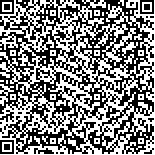尹正录,孟兆祥,王继兵,等.关节内注射富血小板血浆或玻璃酸钠联合等速肌力训练对膝骨性关节炎的影响[J].中华物理医学与康复杂志,2019,41(10):764-768
扫码阅读全文

|
| 关节内注射富血小板血浆或玻璃酸钠联合等速肌力训练对膝骨性关节炎的影响 |
|
| |
| DOI:DOI:10.3760/cma.j.issn.0254-1424.2019.10.011 |
| 中文关键词: 膝关节 骨性关节炎 富血小板血浆 玻璃酸钠 等速肌力 |
| 英文关键词: Knees Osteoarthritis Plasma sodium hyaluronate Isokinetic strength |
| 基金项目: |
|
| 摘要点击次数: 5755 |
| 全文下载次数: 6462 |
| 中文摘要: |
| 目的 观察在等速肌力训练基础上,向关节腔内注射富血小板血浆(PRP)或玻璃酸钠对膝骨性关节炎(KOA)的疗效。 方法 采用随机数字表法将50例KOA患者分为PRP组和玻璃酸钠组,每组25例。PRP组采用5 ml自体PRP进行膝关节腔内注射,每2周1次,连续6周;玻璃酸钠组采用2 ml玻璃酸钠进行膝关节腔内注射,每周1次,连续6周。术后两组均进行等速肌力训练,每周3次,连续6周。治疗前及治疗6周后、3个月、6个月、12个月,对患者进行随访,进行西安大略和麦克马斯特大学骨关节炎指数(WOMAC)评估,采用Biodex System 4型等速肌力测试系统评价患侧膝关节屈、伸肌峰力矩(PT)、总功量(TW)和平均功率(AP)。 结果 治疗前,2组患者WOMAC疼痛、僵硬、关节评分比较,差异无统计学意义(P>0.05)。与组内治疗前比较,2组患者治疗后不同时间点的WOMAC疼痛、僵硬、关节评分均有所改善(P<0.05)。与玻璃酸钠组治疗后同时间点比较,PRP组治疗3个月[(6.44±1.56)分]、6个月[(6.12±2.72)分]、12个月[(7.18±2.19)分]的WOMAC疼痛评分较低(P<0.05),PRP组治疗6个月[(2.11±1.07)分]、12个月[(2.55±0.77)分]的WOMAC僵硬评分较低(P<0.05),PRP组治疗6个月[(24.54±7.09)分]、12个月[(25.04±5.72)分]的WOMAC关节功能评分较低(P<0.05)。与组内治疗前比较,2组患者治疗6周后、12个月时在角速度60°/s、90°/s下的屈肌、伸肌PT、TW、AP均有所改善(P<0.05)。与玻璃酸钠组治疗后同时间点、同指标比较,PRP组治疗12个月时在角速度60°/s、90°/s下的屈肌、伸肌PT、TW、AP较为优异,差异有统计学意义(P<0.05)。 结论 关节腔内注射自体PRP或玻璃酸钠联合等速肌力训练均能有效缓解KOA患者的膝关节疼痛及活动受限等临床症状,但PRP疗效更显著,值得临床应用、推广。 |
| 英文摘要: |
| Objective To compare the efficacy of intra-articular injection of autologous platelet-rich plasma (PRP) with that of sodium hyaluronate for patients with knee osteoarthritis (KOA). Methods Fifty KOA patients were randomly divided into a PRP group (n=25) and a sodium hyaluronate group (n=25). Those in the PRP group were injected intra-articularly with 5 ml of autologous PRP every 2 weeks for 6 consecutive weeks, while the sodium hyaluronate group was given intra-articular injections of 2 ml of sodium hyaluronate once a week for 6 weeks. Both groups performed isokinetic strength training three times a week for 6 weeks. Before as well as 6 weeks, 3 months, 6 months and 12 months after the treatment, both groups were followed and evaluated using the Western Ontario and McMaster University osteoarthritis index (WOMAC). A Biodex System 4 isometric muscle strength testing system was used to evaluate the knees′ peak torque (PT) in flexion and extension, total power (TW), and average power (AP). Results Before the treatment there were no significant differences in pain, stiffness or average WOMAC score between the two groups. Afterward significant improvement was observed in the pain, stiffness and WOMAC scores of both groups. Compared with the sodium hyaluronate group, significantly greater decreases in the average WOMAC pain score were observed in the PRP group after the different intervals. That was also true of the average stiffness scores and the overall average WOMAC scores after 6 and 12 months. The flexor and extensor PT, TW and AP at the angular velocities of 60°/s and 90°/s also improved significantly in both groups after 6 weeks and 12 months, with the improvement of the PRP group significantly greater than that in the control group at the same time points. Conclusion Intra-articular injection of either autologous PRP or sodium hyaluronate can effectively alleviate the clinical symptoms of KOA when combined with isokinetic strength training. However, PRP is the more effective. Its use is worthy of clinical application and promotion. |
|
查看全文
查看/发表评论 下载PDF阅读器 |
| 关闭 |